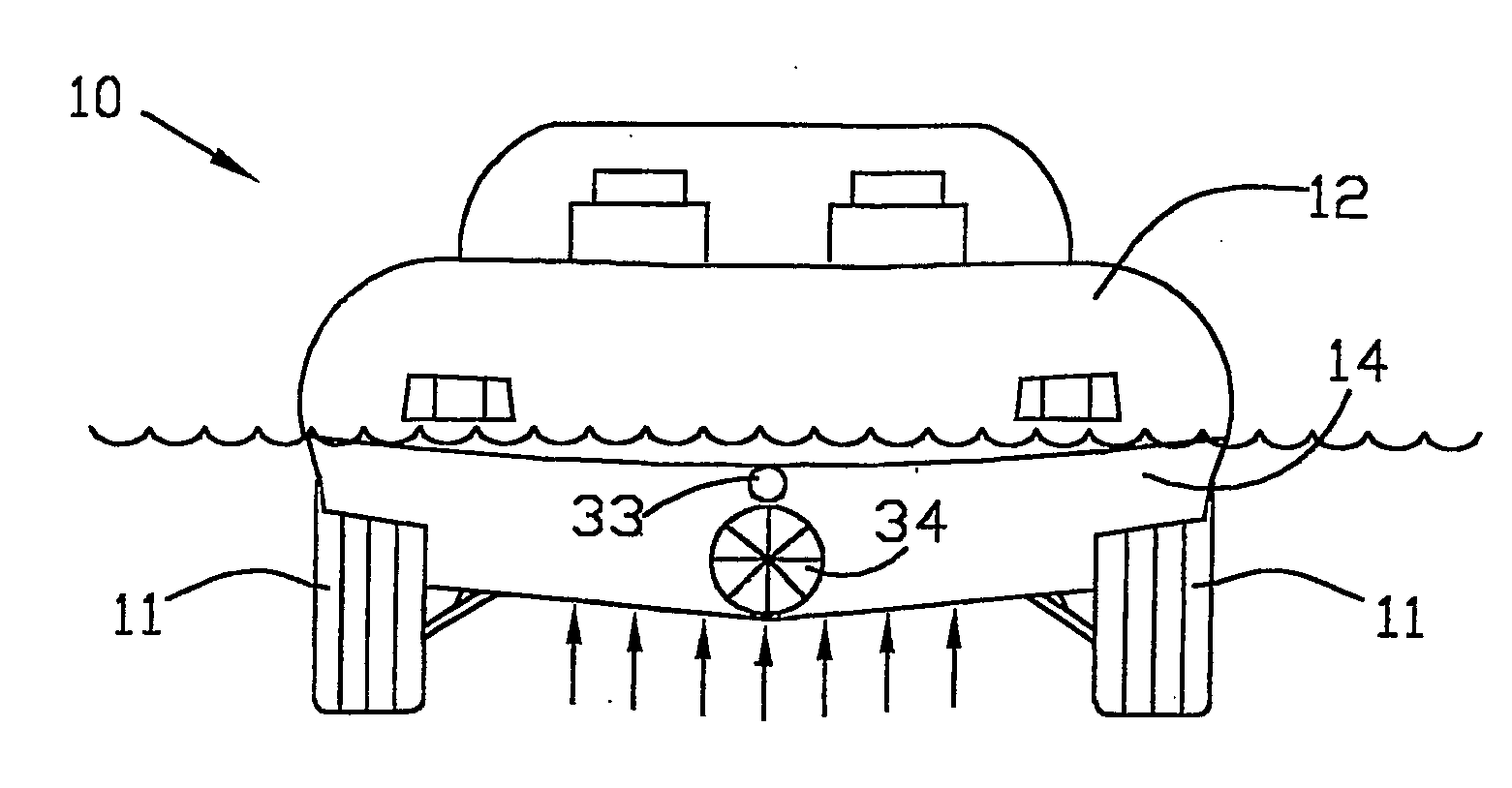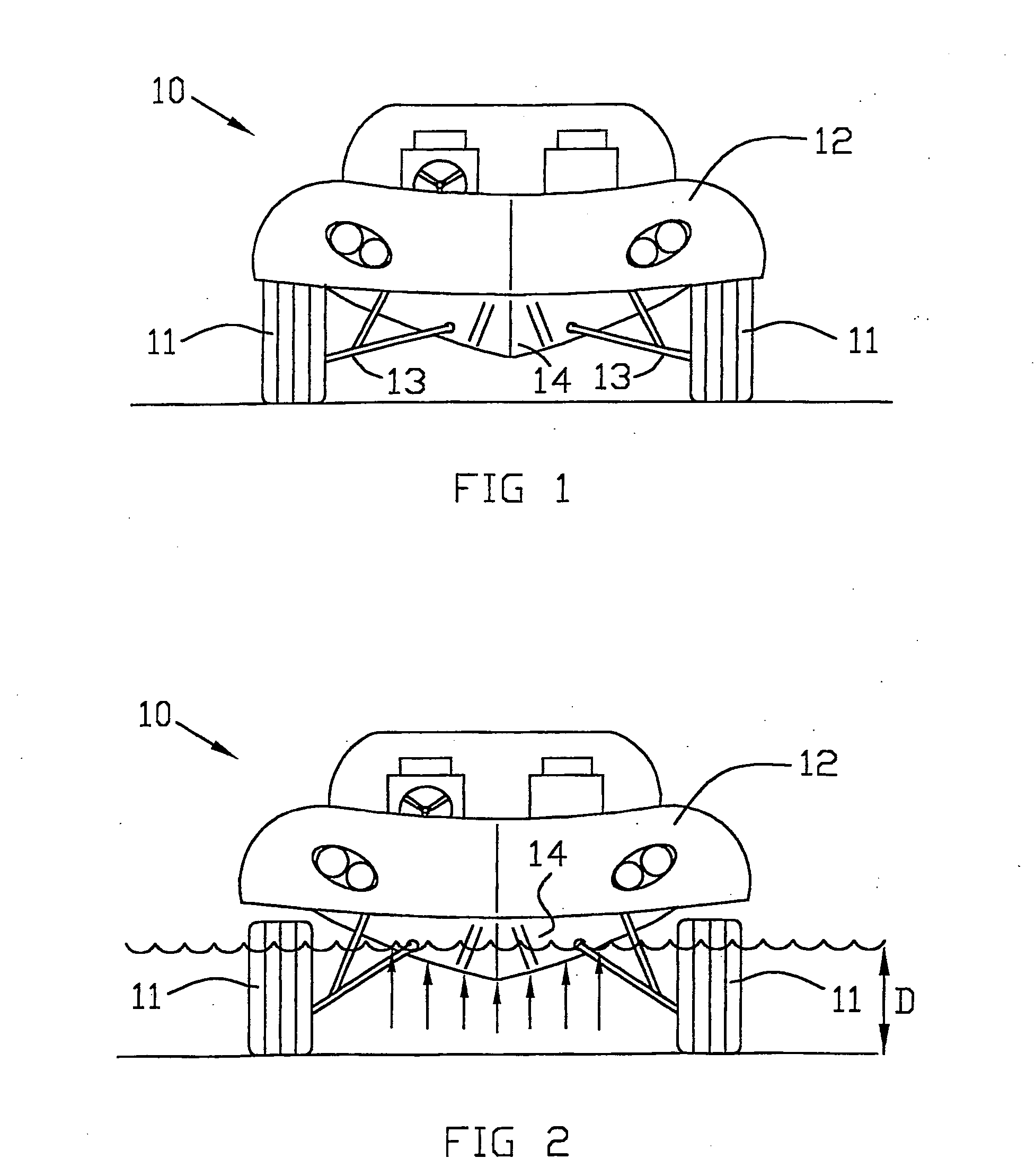Amphibious vehicle
a technology of amphibious vehicles and propulsive elements, applied in the direction of propulsive elements, water acting propulsive elements, vessel construction, etc., can solve the problems of vehicle bottom out, vehicle is not able to make a smooth transition, and the driver may make an error in judging the depth of water
- Summary
- Abstract
- Description
- Claims
- Application Information
AI Technical Summary
Benefits of technology
Problems solved by technology
Method used
Image
Examples
Embodiment Construction
[0016]FIGS. 1 and 2 show an amphibious vehicle, indicated generally at 10. The vehicle has wheels 11, each of which is mounted to a vehicle body 12 by means of a respective suspension assembly 13. Although only two wheels 11 are shown in FIG. 1, it will be understood that in a preferred embodiment, the vehicle has four wheels, two at the front and two at the rear, as shown in FIG. 4. However, the precise number of wheels on the vehicle is not essential to the invention.
[0017] In FIG. 1, the vehicle is on land with all the vehicle mass being supported by the suspension. The wheels 11 are at their normal relative position with respect to the vehicle body 12.
[0018]FIG. 2 shows the amphibious vehicle in water of a depth “D”. As the vehicle 10 enters the water, the mass of the vehicle becomes partially supported by the buoyancy of the hull 14 (as indicated by the arrows), reducing the load on the vehicle suspension. As the depth of the water increases, the proportion of the mass of the...
PUM
 Login to View More
Login to View More Abstract
Description
Claims
Application Information
 Login to View More
Login to View More - R&D
- Intellectual Property
- Life Sciences
- Materials
- Tech Scout
- Unparalleled Data Quality
- Higher Quality Content
- 60% Fewer Hallucinations
Browse by: Latest US Patents, China's latest patents, Technical Efficacy Thesaurus, Application Domain, Technology Topic, Popular Technical Reports.
© 2025 PatSnap. All rights reserved.Legal|Privacy policy|Modern Slavery Act Transparency Statement|Sitemap|About US| Contact US: help@patsnap.com



